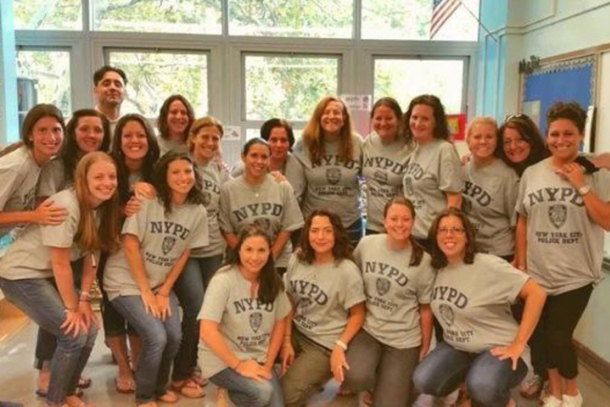Racism, Bias, and Teacher Accountability
2 min read
When I see a group of white teachers, largely female, posing and smiling in their NYPD t-shirts, it gives me pause.
Not because their union told them not to, but because it shows an incredible degree of cluelessness and disregard for the students they are supposed to be serving.

According to the NY Post the photo above shows teachers at PS 220 in Queens. By my count, there are 20 people in the photo. I was curious about the demographics of the school where this picture was taken, so I went to NCES where you can look these things up. The exported dataset I used for this post is attached.
In 2011-2012, this school had 41 teaching FTE allocated to the school. We can safely estimate that these 41 FTE were split among approximately 50 adults, as schools commonly have part time FTE positions. Using these numbers, it's possible that the adults in the photo shared above represent between 1/3 to 1/2 of the school's teaching staff.
Looking at the school demographics, in 2011-2012, PS 220 was a schoolwide Title I school. The school enrolled 609 students, preK through 5th grade. According to NCES Data, of those 609 students, 58 are black, and 154 are Hispanic, which means that over a third of the student body looks a lot like the New York City population that was racially profiled as part of stop and frisk.
If a group of teachers can't understand how, in the weeks after several high profile cases of brown people dying from police violence, greeting their students in NYPD shirts doesn't erode trust between teachers, students, and the larger community, then they lack both the cultural competence and critical thinking skills to lead effectively. When people talk about a disconnect between teachers and their communities, and the need for teachers to be accountable for their student's learning, this is what they are talking about. Kids won't take the risks they need to take to learn well in an environment where they are devalued. For people who want high stakes accountability, the actions of the teachers in New York who spoke against the anti-brutality rally are another reason it's necessary.
It's often difficult to pin down what bad or ineffective teaching looks like. It can be difficult to define the intangibles that create or destroy a culture of learning. Thanks to the teachers at PS 220, we have a picture.

